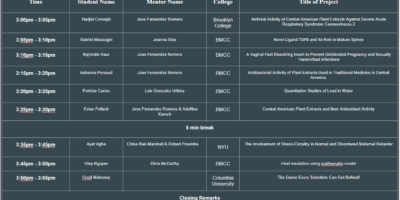 Author:
Author:
Gabriel Mascagni
Mentor:
Joanna Giza
Abstract:
Memory acquisition is encoded and stored in plastic connections within neural networks. The process of learning and retaining information starts when thin dendritic protrusions called spines form and grow into larger mushroom-like formations as they mature and become part of long-term memory. With time, some spines become promising targets for the regulation of memory specificity. Growth factors (GFs) have been implicated in synapse/spine formation and maintenance since the establishment and functioning of neural networks requires their trophic support. However, their prodomains that may play a role in the opposite process of elimination are poorly described. Since both spine expansion and elimination are critical for memory establishment, their imbalance can lead to Schizophrenia, Alzheimer’s disease, or autism. We will focus our analysis on growth factor Beta (TGFB) that recently has been shown to enlarge dendritic spines in mature neurons in culture, but the independent role of its pro-domain called latency associated peptide (LAP) has not yet been studied. Specifically, we will examine the role of LAP in regulating spine morphology and cell signaling. It is possible that the TGFB prodomain can regulate synapse elimination and remodeling, which would offer an innovative regulatory mechanism not only in the field of learning and memory, but also in discrepancies observed in dysregulated TGFB signaling in autism, and several single nucleotide polymorphism (SNP) linked to Schizophrenia.

